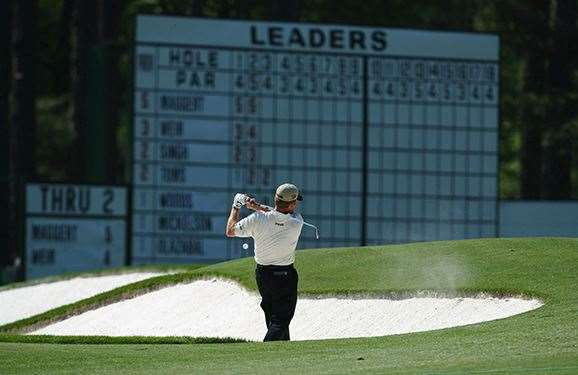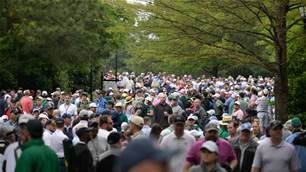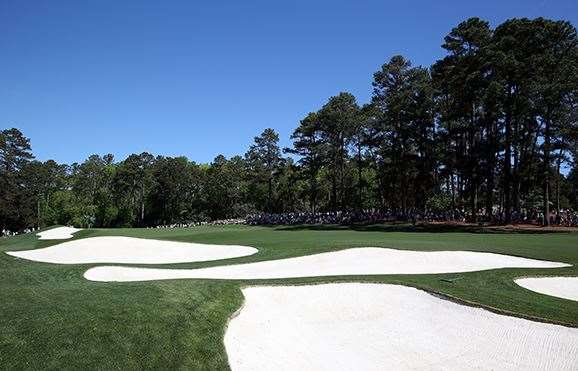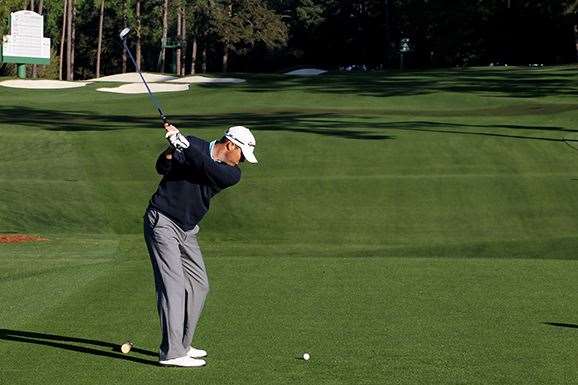History suggests Augusta National's shortest par-4, the 3rd, known as Flowering Peach, has a habit of determining who wins green jackets
BY STEVE KEIPERT AT AUGUSTA NATIONAL GC
It's the shortest par-4 at Augusta National but also perhaps it’s most intriguing. The 3rd hole, known as Flowering Peach, is a potentially driveable par-4 that places a premium on pinpoint wedge play.
Despite being 90 yards shorter than all the other par-4s, it was the one hole to be shortened during the extensive redesign work of 2001 and 2002 that saw so much modern length added to the layout. Yet the 3rd was docked ten yards, dropping from 360 yards to 350.
It is also the one hole to most closely resemble Dr Alister MacKenzie's original blueprint for the property. The hole is straight with a fairway that rises gently from the tee before dipping to a hollow and rising once more to a clever but cruel L-shaped green with a bunker below its left edge. A scheme of four fairway bunkers was added to the left side of the broad fairway in 1982 to enhance and force decisions on the tee shot.
The 2003 Masters placed the 3rd hole in the spotlight when contenders Tiger Woods and Jeff Maggert both came to grief on Sunday at the usually innocuous par-4. Attempting to drive the green after a period of discussion with then-caddie Steve Williams on the tee, Woods made an indecisive play and blasted a driver well right into the trees and pine straw that led to a momentum-quelling bogey.
 Jeff Maggert tries to play out of a fairway bunker on the 3rd hole and the ball hits the lip and hits him on the ricochet, all but costing him the 2003 Masters. PHOTO: Getty Images
Jeff Maggert tries to play out of a fairway bunker on the 3rd hole and the ball hits the lip and hits him on the ricochet, all but costing him the 2003 Masters. PHOTO: Getty ImagesWorse came for Maggert, who led the tournament when his tee shot found one of the fairway bunkers. His second shot ricocheted off the lip and struck him in the chest, earning him a two-stroke penalty and, eventually, a triple-bogey. (A rule change several years later meant a similar scenario today would attract just a one-stroke penalty.)
Historically, the 3rd hole ranks as one of the easiest, averaging 4.08 between 1942 and 2014, which places it 14th overall - with only the par-5s playing easier. Last year Flowering Peach averaged 4.07 (13th), while it played toughest in 1989 (averaging 4.267) and easiest in 2011 (3.885).
Charl Schwartzel won that 2011 Masters by becoming the first champion to birdie the last four holes but what sparked his closing 66 was a holed wedge for eagle at the 3rd. Adam Scott made the first birdie of his winning Sunday two years ago at No.3.
Watching him approach the hole in practice this week was a study in strategic diversity. The common practice for long hitters who can challenge the green with their tee shot is to lay back for a full wedge shot when the flag is in the narrow front left portion but to contemplate driving it right up in front of the green when the flag is in the more generous back right area, which invites a shorter, chasing approach. That shot needs to be struck with care, however, as the rear section of the green slopes gently towards the back fringe, which is at odds with the tilt of the rest of the putting surface.
It is a genius design that would be highlighted even further if the 3rd hole fell later in the round and therefore had greater impact on the outcome.
Related Articles

Hero World Challenge field spotlights Australian Open hurdle and OWGR prospects

Huggan: Before too long, Augusta’s mildly amusing rules gravitate to irritating















